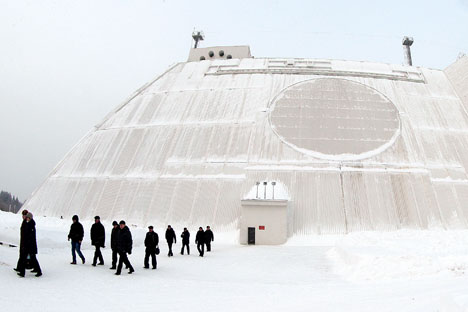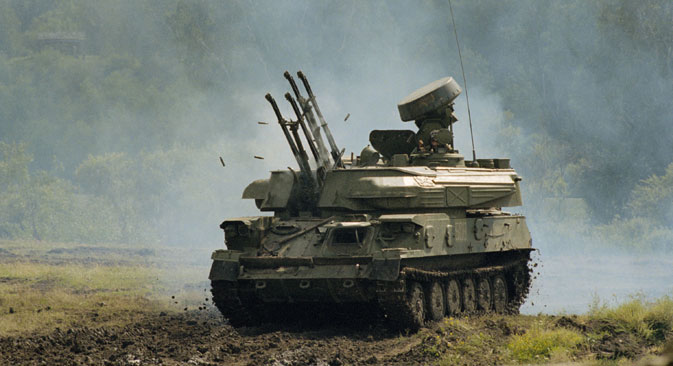New missile defences being developed

The new-generation system should include upgraded Don-2NP radar receiver sections and transition section units, which will be replaced soon by the Don-2M radar.
Mikhail Metsel / TASSColonel Andrei Cheburin, speaking on January 23, said Russia's anti-ballistic missile (ABM) system was being completely overhauled over the past few years. "I think that in the near future our country will have a truly ultramodern missile defence system," he concluded.
In autumn of 2012, Russia’s defence authorities stated that the functional ABM system, the A-135 Amur, was being given a major upgrade. Colonel General (Retired) Viktor Yesin, then chief of the Russian Strategic Missile Forces, told RIA Novosti that the missiles were being replaced with new ones with an improved design. All the other elements of the system, including the detection and tracking components, were also being revamped. The missiles would use launch silos currently mothballed, he added.
Enemy at the Gates
The threat America's ABM system being expanded over the past two years has prompted Russia to step up its work to develop a new ABM system of its own. The new system, which will replace the A-135 Amur, has been designated as the A-235.
There are two aspects to the project: the RTTs-181M system, which is effectively an A-235 system, and the Samolyot-M aircraft, including the design of new warheads for the ABMs. The work is being done in secrecy and kept under wraps, so very few details are available.
According to what information is available, the new-generation system should include upgraded Don-2NP radar receiver sections and transition section units, which will be replaced soon by the Don-2M radar. The upgradation was done in 2009 by RTI Systems. The computer and control centres will be given a new Elbrus-3M supercomputer in place of the outdated Elbrus-2. The system is expected to be used along with the Taiga early warning system now being developed.
Different ranges
The A-235 will have missiles capable of operating at three different ranges: long-range, based on the 51T6 and capable of destroying targets at distances up to 1500 km (930 miles), at altitudes up to 800,000 m; medium-range, an update of the 58R6, designed to hit targets at distances up to 1000 km (620 miles), at altitudes up to 120,000 m; and short-range (the 53T6M or 45T6 (based on the 53T6)), with an operating range of 350 km (215 miles) and a flight ceiling of 40,000-50,000 m.
The long-range missiles will most likely be equipped with nuclear warheads, while the others will have kinetic energy warheads. Testing of new missiles for the A-235 Samolyot-M system began in August 2014.
Defending Moscow
Russia's present ABM system, in service since 1971 and part of the defence system for Moscow and Russia's central industrial region, comprises the 5N20 Don-2N radar, two 5K80 computer and control centres equipped with Elbrus and Zarya computing systems, connected to the Oko and Oko-1 early warning satellite systems, as well as to 32 51T6 long-range ABMs, and 68 53T6 short-range ABMs.
The 51T6 (A-925) Azov ABM (NATO reporting name: SH-11/ABM-4 GORGON) can hit targets outside the atmosphere. It was taken out of service between 2002 and 2003 owing to the expiry of its useful life. Its launch silos were then mothballed and may be used for the new long-range ABMs. The 53T6 (PRS-1) short-range ABM (NATO reporting name: SH-08/ABM-3A GAZELLE) is still in service.
All rights reserved by Rossiyskaya Gazeta.
Subscribe
to our newsletter!
Get the week's best stories straight to your inbox
